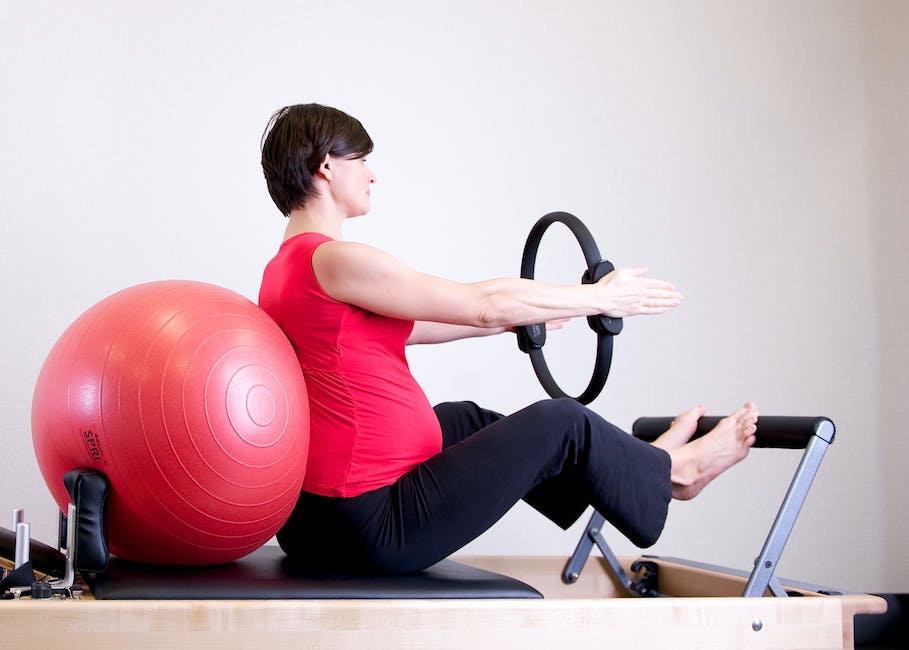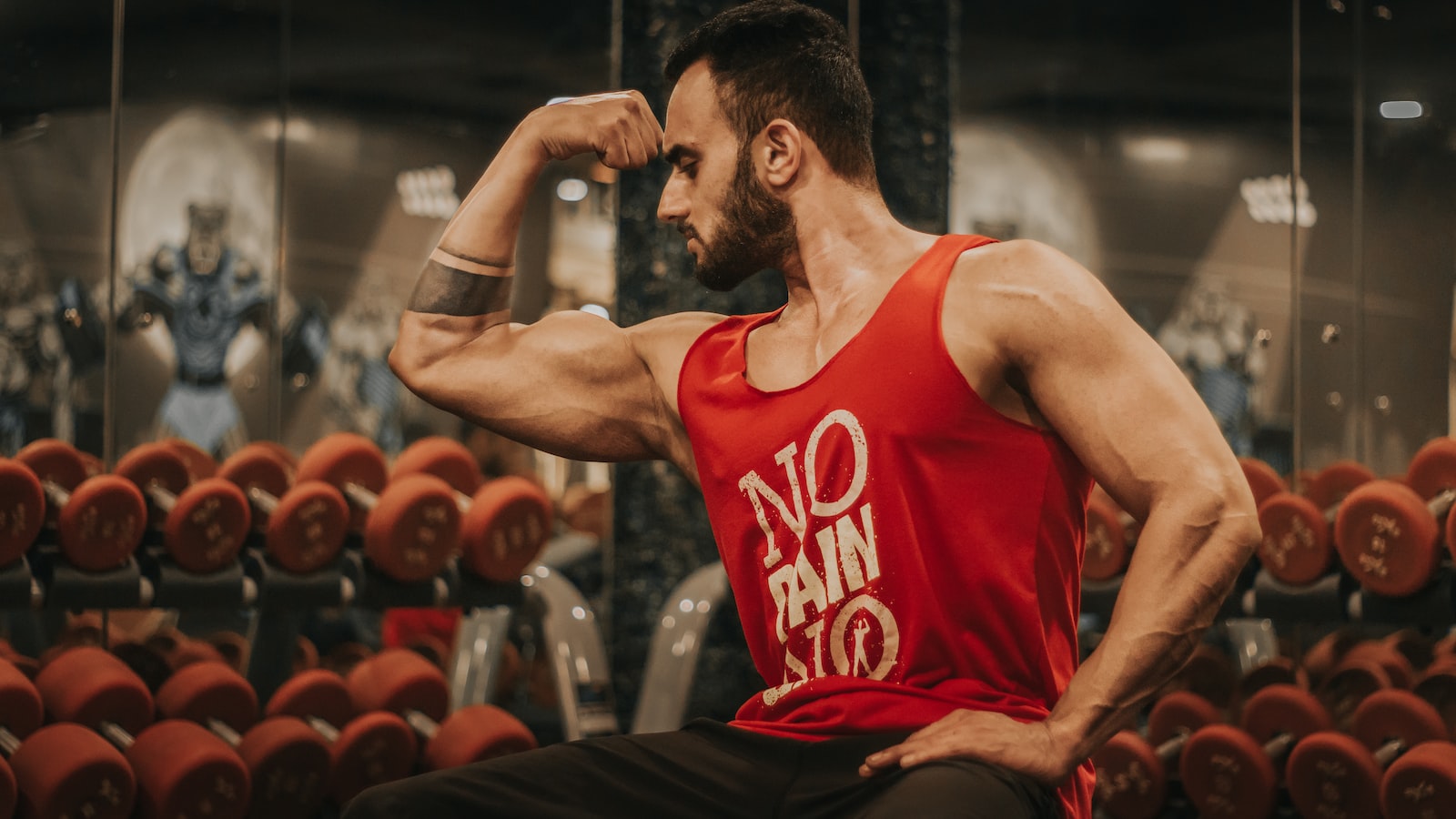
All about Pilates: An Introduction to Fitness
Are you an exercise enthusiast looking for a new fitness routine that balances strength, flexibility and body control? If so, Pilates may be just what you’re looking for! We’ve got all the information you need to get started and become a master of the Pilates mat. Let’s dive in and learn all about Pilates – an introduction to fitness.
List of Content
- 1. What is Pilates?
- 2. Benefits of Pilates
- 3. Tips for Getting Started with Pilates
- 4. Common Misconceptions About Pilates
- 5. Choosing the Right Pilates Class
- 6. Making Pilates Part of Your Fitness Plan
- You Ask, I answer

1. What is Pilates?
Pilates is a form of physical exercise designed to improve body awareness and strength. Developed by Joseph Pilates in the early 1900s, the technique focuses on creating proper physical alignment, developing balance and improving coordination. It combines elements of stretching, yoga, and tai chi to create a total body workout that can be modified to suit any fitness level.
What are the benefits?
- Improved muscle tone and circulation
- Developed posture and improved balance
- Greater strength and flexibility
- Reduced stress and fatigue
In Pilates, physical exercises are used to promote relaxation, proper breathing techniques, and increased coordination and control over the body. It helps to improve core strength, increase circulation and build overall body strength and flexibility. With regular practice, Pilates can assist in improving physical posture and reducing pain associated with conditions such as arthritis, sciatica, and scoliosis.
What Is Involved in Pilates?
A typical Pilates class lasts one hour and involves using either a mat or a reformer machine in a series of exercises that focus on core stability. These exercises include resistance training, stretching and breathing techniques. It is vital to work with an instructor to ensure proper form and technique to avoid injury. While the primary focus of Pilates is on the core muscles, it also works on the arms, legs, and glutes for a total body workout.

2. Benefits of Pilates
Improved Posture
Pilates is all about improving your body posture and strengthening your core muscles – the muscles at center of your body, which includes the back, abdomen, hips and buttocks. Strong core muscles not only improve your posture, but also help reduce lower back pain.
More Flexibility
Thanks to its gentle and low impact movements, Pilates focuses on improving the range of motion and flexibility of your body. With regular practice, you will be able to develop better control over your movements, and move gracefully across different directions.
Develops Strength & Endurance
Pilates incorporates exercises which are designed to develop strength and endurance. You will start feeling stronger in no time! Many workouts focus on a few parts of the body while neglecting the others. However, Pilates focuses on muscles from head to toe, making the body stronger & more balanced.
Good For All Fitness Levels
Pilates has modified versions of each exercise that can be used for any fitness level, meaning it can be used by beginners to pros. So instead of looking up a different workout for different levels, you can stay on the same program no matter what your current fitness level is!
3. Tips for Getting Started with Pilates
1. Choose the Right Pilates Class: Before embarking on your Pilates journey, it’s important to determine which type of Pilates class is right for you. There are three main types of Pilates classes available – mat classes, reformer classes and private sessions. Mat classes are basic and designed for those who are new to Pilates. Reformer classes are more intense and employ the use of a Pilates reformer, a machine which gives resistance to different exercises. Private sessions provide personalized guidance from a Pilates instructor and they’re especially beneficial for those with certain injuries or pre-existing medical conditions.
2. Don the Right Gear: To stay comfortable and focused during your Pilates workouts, it’s important to wear the right clothing and accessories. Appropriate Pilates attire includes fitted, flexible clothing and non-slip socks. Other optional gear includes a Pilates ball and Pilates ring.
3. Learn the Pilates Principles: The cornerstone of any successful Pilates practice is knowledge of the Pilates principles. These consist of six principles, which work together to maximize the efficiency and results of Pilates exercises:
- Concentration: Focus on doing each exercise correctly, with full control and in tune with your own breath
- Centering: Keep your body centered around the power space near your abdomen
- Control: Execute each movement deliberately, using the concentration and centering you’ve learned
- Breath: Utilize deep and even breaths to lubricate each exercise
- Precision: Move through each exercise with full consciousness and exact direction
- Flow:Maintain a calming and constant flow of movement within each exercise
4. Maintain Proper Form: Pilates is anuexercisemethat relies on proper form and technique in order to be effective. It’s important to ensure that your posture is correct and that you’re performing the exercises correctly. Pay special attention to your rhythm, alignment and the range of motion for each exercise. If at any time you feel strain or discomfort, take a break and adjust your form accordingly. Remember, Pilates is meant to be a relaxing and rewarding experience.
4. Common Misconceptions About Pilates
Pilates is an exercise regimen that involves low-impact stretching, strengthening, and centering movements. Though many people have heard about it, there are still some misconceptions about it. Let’s take a look at some of the most common ones.
- 1. Pilates is Too Easy
- Just because Pilates is considered low-impact and focuses on breathing and body awareness, it doesn’t mean it’s not challenging. Pilates exercises can be performed at various levels and even simple movements can be difficult to master.
- 2. It Isn’t Beneficial For Weight Loss
- Though Pilates isn’t an aerobic exercise, it still has tons of weight loss benefits. The exercises use your body’s own resistance to work the muscles and help build them, leading to increased calorie burn over time.
- 3. Pilates Is Only For Women
- Both men and women can benefit from Pilates. The workouts are effective for anyone looking to increase their flexibility, balance, and strength in their core muscles.
- 4. Pilates Isn’t Good For Athletes
- The truth is, Pilates can be very beneficial for athletes. Pilates can help improve balance, strength, and flexibility, all of which are necessary for high-performance levels. It can also help mitigate athletic injuries.
5. Choosing the Right Pilates Class
Finding the right Pilates class can increase the chances of you having an enjoyable and beneficial workout. Pilates classes come in many shapes and sizes, from prenatal to advanced. Here are five key points to consider when selecting an appropriate class.
- Suitable instructor: The most important thing to consider when choosing a Pilates class is the instructor. Check if the instructor has the proper credentials, such as certification and expertise in the discipline. Ask the instructor about their qualifications and approach to teaching.
- Class size: The ideal class size for Pilates classes ranges from 4 to 10 participants. If there are too many people, you may not be able to get proper instruction from the instructor or proper form correction.
- Class frequency: Classes may be held several times a week, once a month or any other frequency. If you want to see progress, consider attending a class at least once a week.
It’s also important to check the types of equipment used in the class and if the class is tailored to specific conditions such as back pain or pregnancy. Make sure you know what to expect from the class in terms of movements and intensity levels.
Finally, once you join a class, don’t hesitate to ask questions and adjust your posture if needed. The most important thing is that you work at your own pace and feel comfortable.
6. Making Pilates Part of Your Fitness Plan
Adding Pilates to your fitness plan can help you develop better posture, mobility, balance, and strength. Here are some tips for getting started:
- Know Your Goals: Before beginning Pilates, decide what goals you have so that you don’t become overwhelmed. Do you want to stretch, gain strength, or tone up?
- Find Your Interests: Tapping into what interests you makes it easier to stick to your plan. Do you enjoy classical Pilates or a more modern style?
- Set Up an Workout Plan: Make sure to plan your Pilates workouts ahead of time so you have more control over what and how much you do. Begin with 2-3 sessions per week.
- Choose Equipment: You don’t need a lot of equipment for Pilates. A mat, a reformer, and some light weights like a light medicine ball can get you started.
Due to the nature of Pilates, it can be easily adapted to different levels of difficulty, making it ideal for novice exercisers, experienced athletes, and everyone in between. Consider incorporating Pilates into your fitness plan a few times a week for a more balanced form of physical activity.
Don’t be discouraged if you don’t get the moves right away—Pilates takes practice. Working with a certified instructor can help you develop better technique, correct your form, and ensure you maximize the benefits of the exercises.
Overall, Pilates is an excellent form of exercise to improve physical and mental well-being. Combining Pilates with other forms of exercise can create a sound fitness plan for any skill level.
You Ask, I answer
Q. What is Pilates?
A. Pilates is a low-impact exercise program that focuses on improving core strength, flexibility, and balance. It uses a variety of exercises to help develop the deep muscles of the abdomen and back, as well as other major muscle groups.
Q. What are the benefits of Pilates?
A. Pilates can help improve posture, increase muscle strength and flexibility, improve balance, prevent injuries, reduce stress, and increase overall body awareness. In addition, since its exercises are usually done on a mat or piece of specialist equipment, Pilates can be done anywhere.
Q. Who can do Pilates?
A. Pilates is suitable for all ages and levels of fitness. Some people may need to modify or adapt the exercises to suit their body and any conditions they may have, and it’s a good idea to speak to your doctor or a fitness professional if you’re unsure.
Q. How often should I do Pilates?
A. If you’re just starting out with Pilates, it’s a good idea to begin slowly with 1-2 sessions a week. As you get more confident in the movements and your muscles strengthen, you may want to increase this up to 3-4 times a week, or even more. Remember to listen to your body and stop if you start to feel pain or discomfort.
When it comes to pilates, it’s important to remember to take the experience at your own pace. With the help of your fitness instructor, you can decide the speed and intensity that best suits you. As you progress, you’ll learn more difficult moves and strengthen your body even further. With correct technique and patience, soon enough, you’ll be seeing improvements in flexibility, mobility, and posture. So, get ready to take a leap into the world of pilates and get ready to reap the amazing benefits it provides.

